
Understanding the emotion behind every action is critical when thinking of a booming data science landscape. This holds for sentiment analysis and natural language processing which targets comprehension of what people think of a topic by mining text for hints. Data science and machine learning have brought forth many popular use cases that make business processes efficient. Opinion mining is guiding the forefront of business progressions.
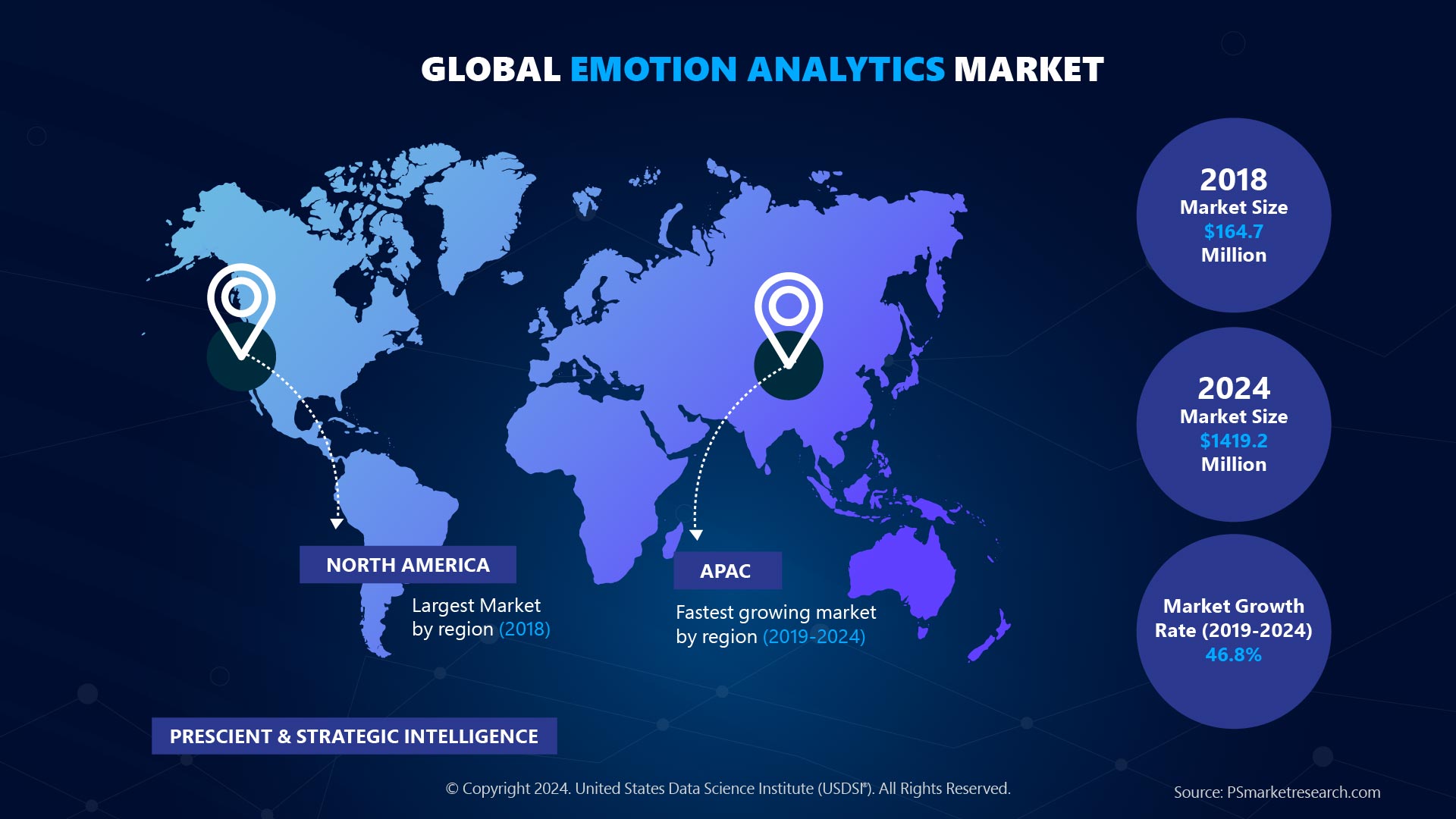
The above representation showcases a tremendous boost in the global emotional analytics market by 2024; reaching USD 1419.2 million soon. The year 2024 will witness APAC become the largest market by region; showcasing a massive progression over the decades (PSmarketresearch.com). It is enough reason to proceed with indulging in the most exciting relay of sentiment analysis ahead; and comprehend the inside out of the industrial applications.
WHAT?
Sentiment Analysis is a natural language processing technique used to identify the sentiment or emotion expressed in a text. It aims to ascertain whether the text has subjective sentiments, beliefs, and attitudes that are good, negative, or neutral. For instance; B2C retailer Nike used social media sentiment analysis to monitor public opinion when it sponsored NFL player Colin Kaepernick. Likewise, a mobile carrier used customer support sentiment analysis to improve its customer service.
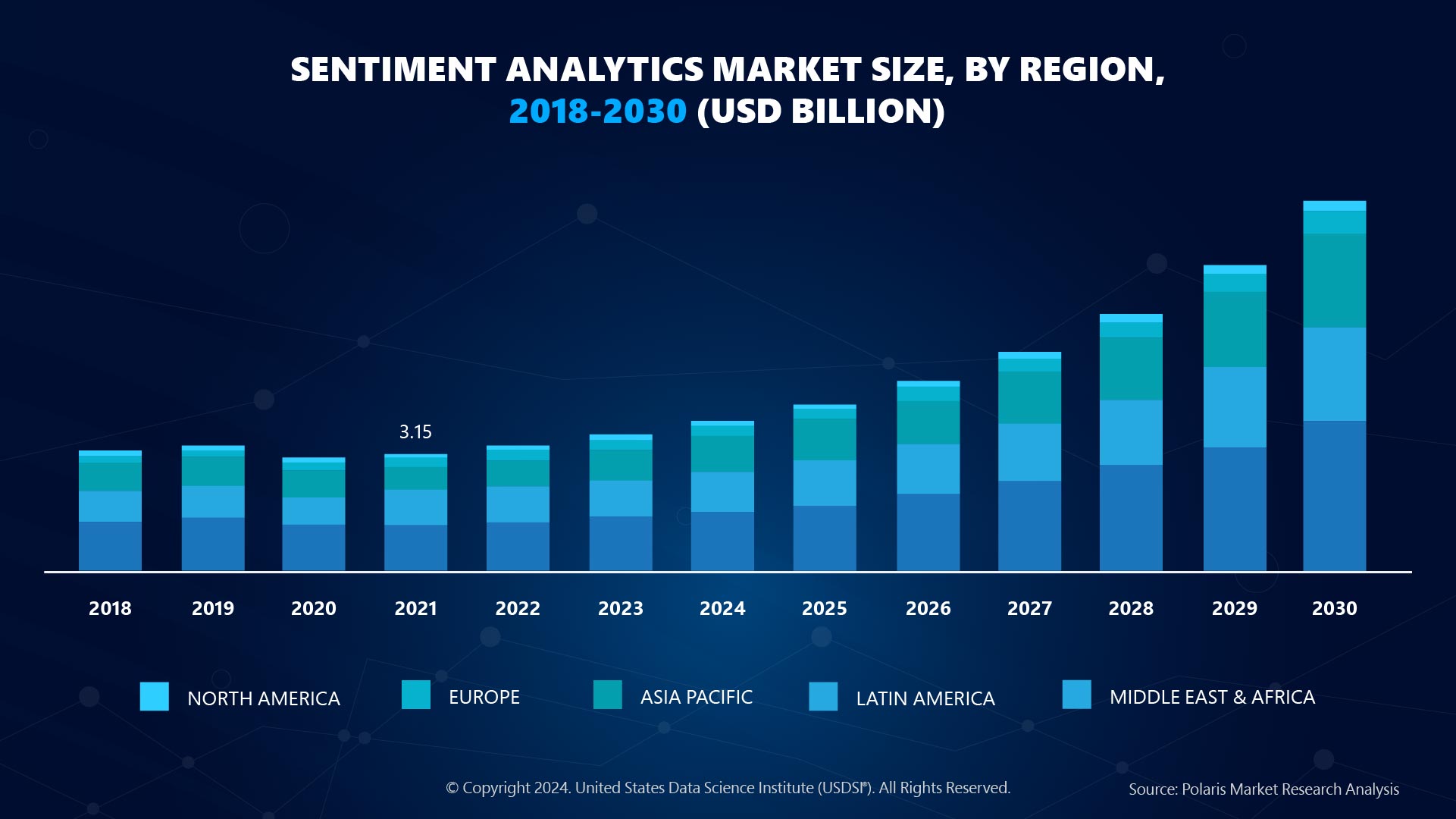
The above representation highlights high-rising smooth geographical growth across nations for sentiment analytics market size through 2030 (Polaris Market Research Analysis). You can easily pivot into a thriving landscape of sentiment analysis with promising career opportunities aligned ahead.
TYPES:
Sentiment analysis, popularly known as Opinion mining, is a subfield of Natural language processing that includes deciding and concentrating on the emotional data in an information text. The various types of sentiment analysis include:
WHEN TO USE?
Sentiment analysis reflects upon the emotion expressed in a text. It is commonly used to analyze customer feedback, survey responses, and product reviews. Social media monitoring, reputation management, and customer experience are a few areas that can benefit from sentiment analysis.
USES:
ACCURACY:
While evaluating the sentiment (positive, negative, neutral) of a given text document; research shows that human analysts tend to agree around 80-85% of the time.
CHALLENGES:
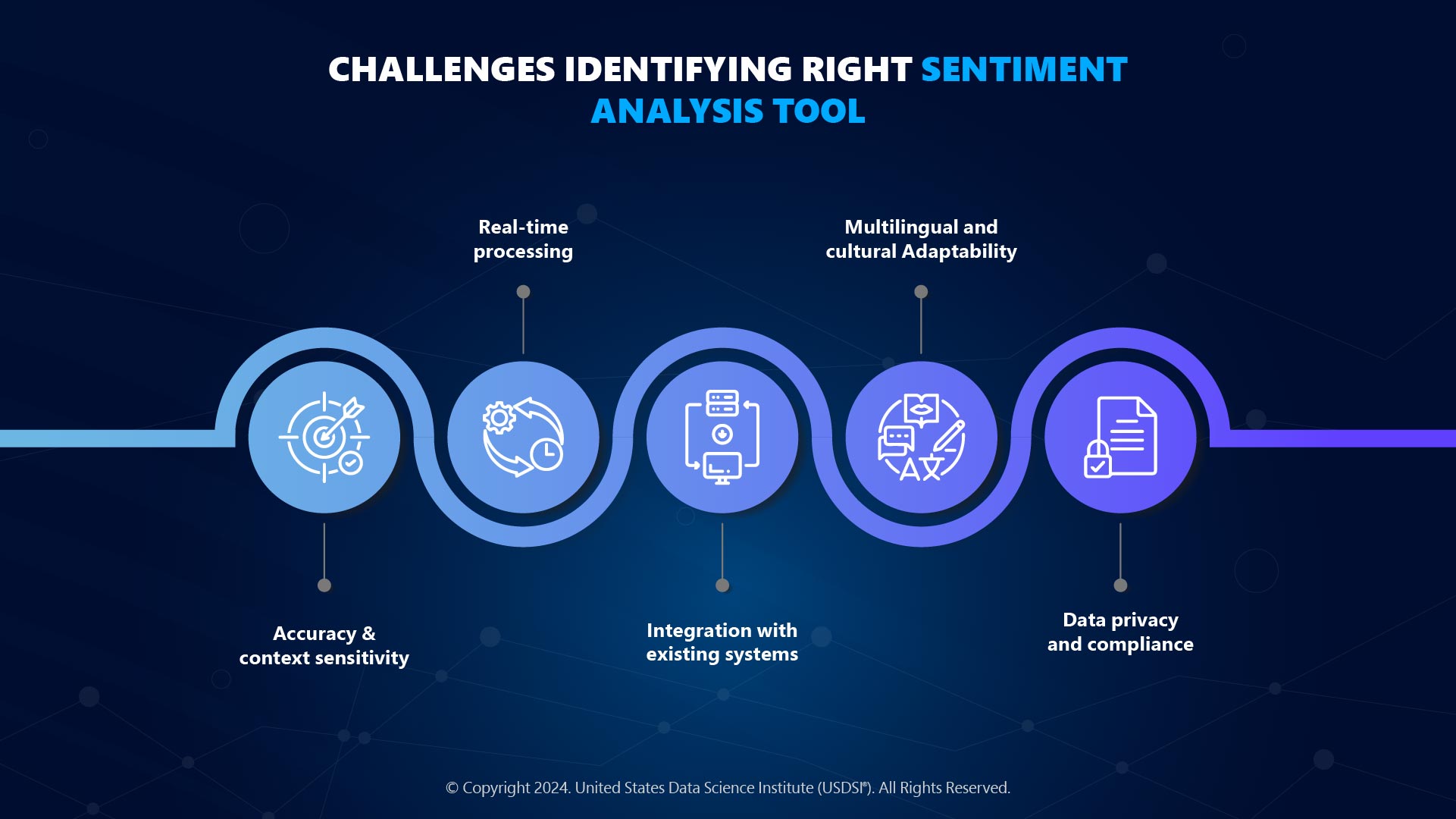
Noting the above listed challenges in addition to the ones mentioned are key factors that impact sentiment analysis tool performance manifold.
BEST MODELS:
Talking about the appropriate models that are suitable for sentiment analysis; popular statistical machine learning models such as Naïve Bayes Classifier, Support Vector Machine (SVM), Logistic regression, Random Forest, and Gradient Boosting Machines (GBM) are all valuable for sentiment analysis; each with their unique strengths.
STEPS TO BUILD?
Building a robust sentiment analysis plan requires the following steps to be followed as a procedure for complete success:
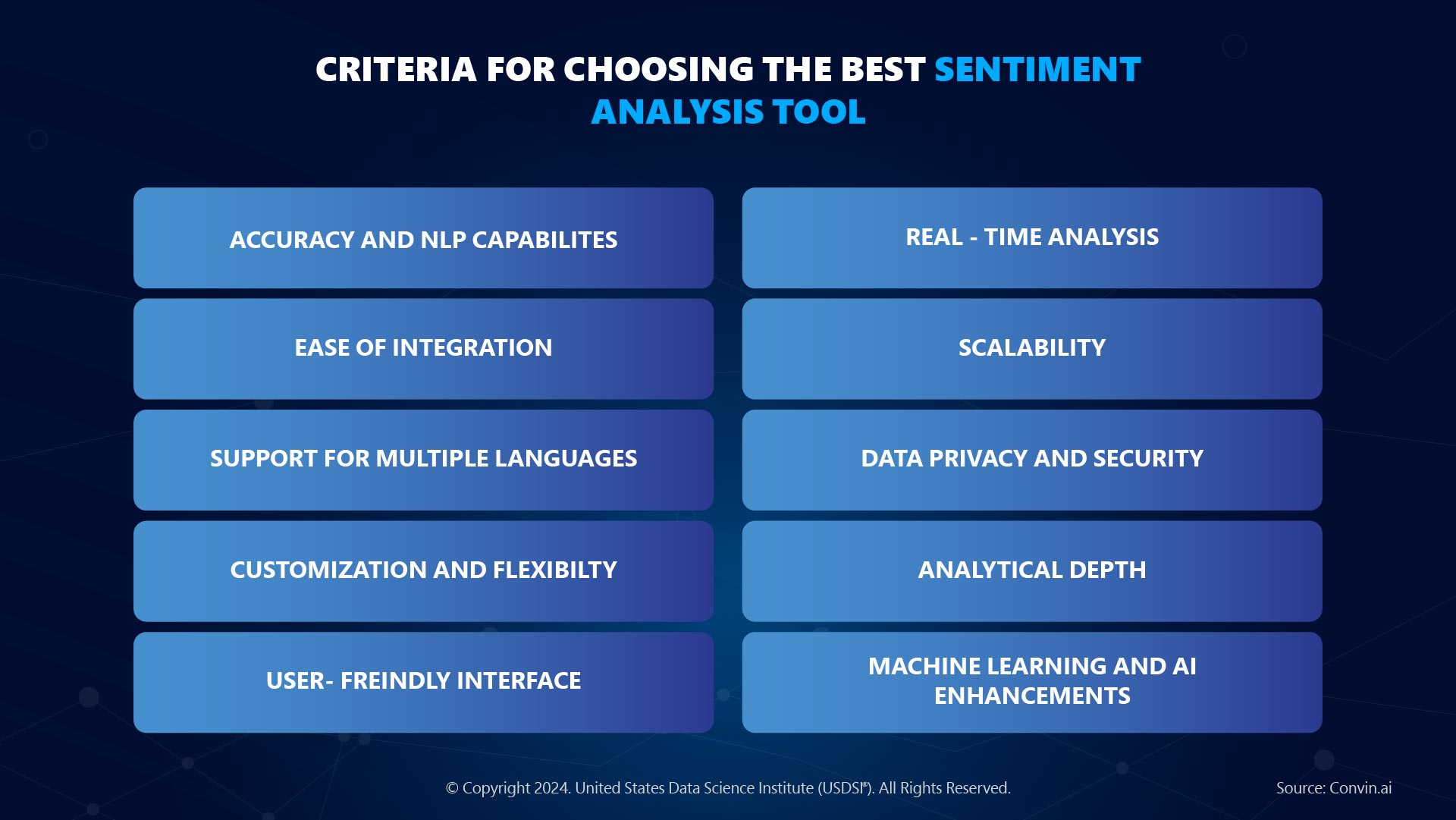
Remembering the above-listed key points to guide your decision for picking the best sentiment analysis tool is pivotal for business success.
CRITICAL ROLE OF SENTIMENT ANALYSIS:
GLOBAL GROWTH OUTLOOK:
The following representation is a crystal-view map of what the future of sentiment analysis holds. Polaris Market Research reflects upon diverse information sectors to gauge a clear understanding of this outrageously smart amplification of sentiment analysis over the years ahead.
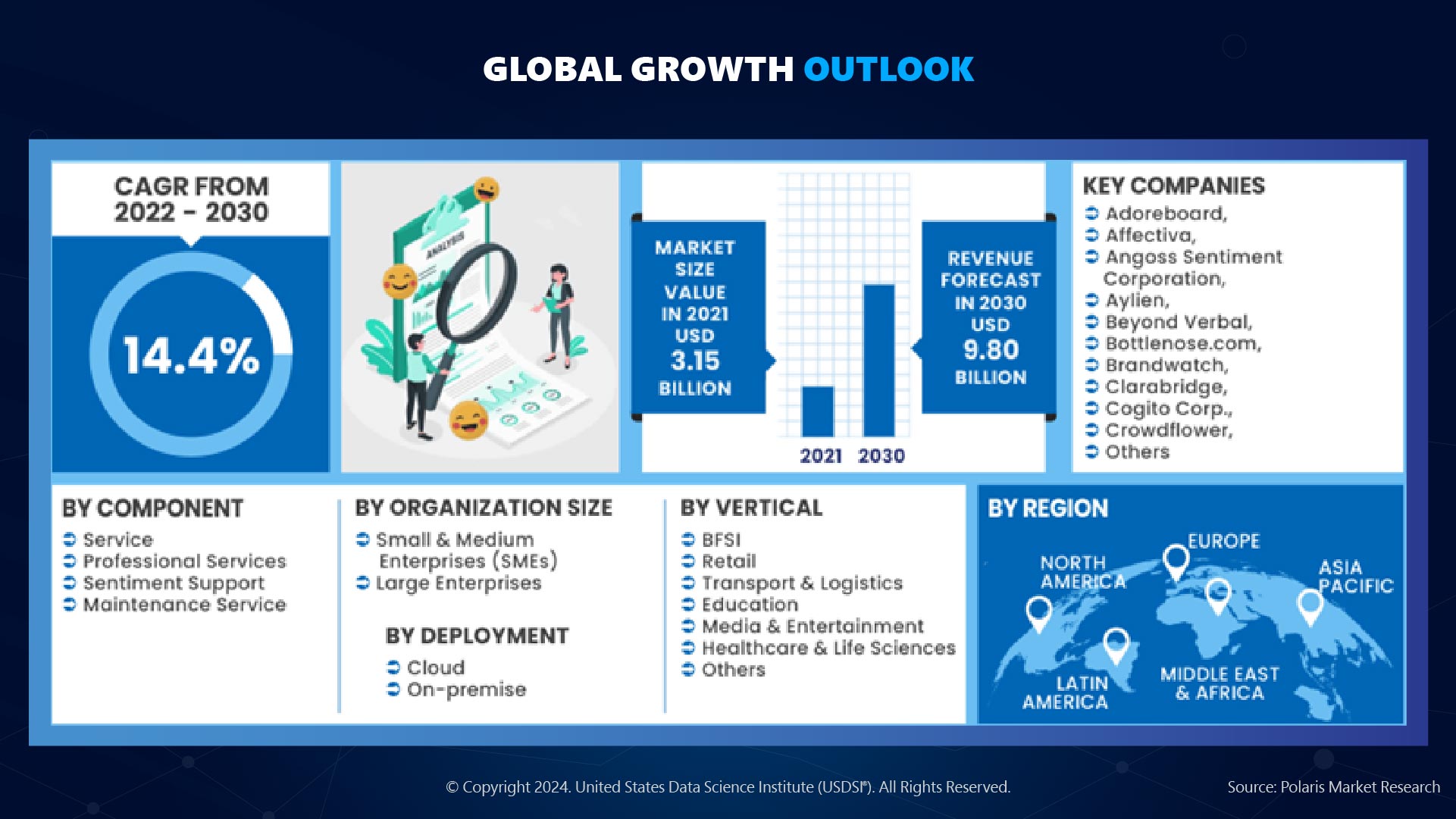
With these numbers highlighting a staggering surge in the way the sentiment analysis market is going to expand its span across sectors worldwide; the year 2030 is sure to realize the said market size (as reflected).
Designing a thriving data science career expects you to master core capabilities in futuristic data science skills via top data science certifications at your disposal. Strengthen your portfolio and become a quick pick in front of your preferred industry giant recruiter in possibly no time. these credentials are powered by industry geniuses who have honored the industry specifics for decades and have a vast pool of expertise in handling data science problems like a pro. Nobody can deny the beneficial aspect of learning from an expert’s hindsight! Explore today and gain big tomorrow!
This website uses cookies to enhance website functionalities and improve your online experience. By clicking Accept or continue browsing this website, you agree to our use of cookies as outlined in our privacy policy.